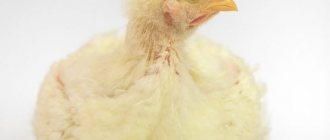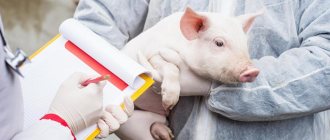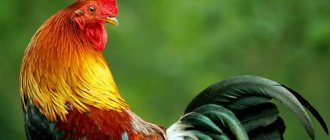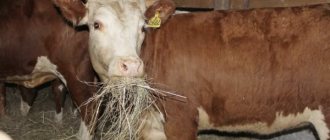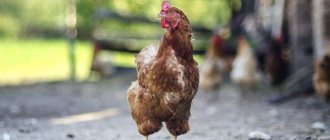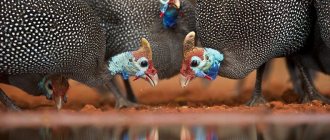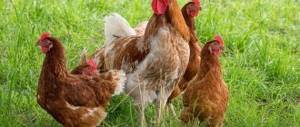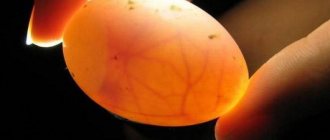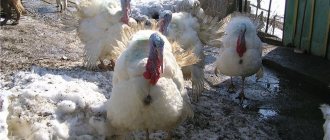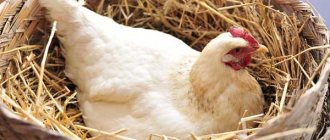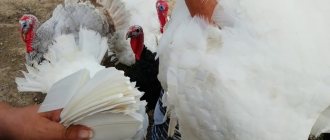Injuries, splinters and other external factors can be the reasons why chickens lame. In some cases, the problem arises due to a lack of microelements and vitamins. Sometimes a limp can be caused by a disease: rickets, tenosynovitis and others. If left untreated, some diseases can lead to the death of a bird. In this article we will tell you how to determine what happened to a chicken. And we'll teach her how to help her.
Unpleasant Accidents
Injury
Lameness can be caused by a sprained or broken leg. Such injuries occur due to:
- fights with relatives;
- accidental fall, for example, from a perch;
- pinching;
- predator attacks;
- stepping on the bird.
If the chicken begins to limp, but no external damage is visible, an examination is carried out for the presence of dislocations or fractures. To do this, her limbs are carefully felt.
If the bird has a dislocation, the bones need to be set back in place. If you have no experience in carrying out such a procedure, it is better not to take risks and seek professional help. You can also do it by phone.
A bone fracture requires surgery, splinting and further rehabilitation of the chicken.
If the bird is limping, but no leg damage is detected, it is recommended to remove it from others. This way she can eat and drink properly.
If the illness is caused by a bruise or an unfortunate fall, after a few days the chicken’s condition will return to normal. And she can be returned to her relatives.
Splinter
Many chickens begin to limp due to a splinter getting into their paw. This is a common occurrence as they walk on the ground a lot and often dig with their feet.
It is easy to detect a splinter - it can be seen with the naked eye. In addition, such an injury is often accompanied by swelling of the affected area.
You can remove a splinter from a chicken's leg yourself. To make the task easier, it is better to remove it with tweezers. After removal, the sore paw should be treated with an antiseptic: miramistine, chlorhexidine, brilliant green.
To prevent the possibility of infection and speed up healing, it is recommended to carry out treatment for 3 days in a row, 2-3 times a day.
If the wounds are not visible, but the chicken continues to limp, it is recommended to seek help from a veterinarian.
Frostbite
This is another reason why chickens limp. Frostbite occurs exclusively in winter and only if chickens are out for a long time.
When frostbite occurs, the limb becomes blue-black and swells. To cure an injured foot, the chicken must be kept warm. It is important to provide her with vitamin drinks. Lubricate damaged areas with goose or pork fat.
The chicken should be kept warm until the leg recovers. If treatment is delayed, frostbite can lead to amputation.
Symptoms of chicken lameness
In a large flock, it is not uncommon to see a lame chicken. Birds fly, like to climb into all sorts of difficult nooks and crannies on the street, and clean up landfills. The result of such habits is injury. However, the reason may be hidden in vitamin deficiency or disease. The last option is the most terrible because of the threat of infection of other birds in the flock.
It is advisable for the poultry farmer to observe the habits of chickens at least once a day. It is easy to detect musculoskeletal disorders based on the following symptoms:
- a chicken walking or trying to get to its feet instantly falls for no reason;
- the bird has trembling paws;
- after resting, a sitting chicken gets up heavily on its legs;
- the bird stands little time, spends more of it sitting;
- swelling and growths appeared on the paws, and the joints became enlarged;
- The shape of the legs and fingers has changed.
In the early stage, symptoms are visible from the behavior of the bird. The chicken is often away from the flock, and its appetite and activity deteriorate.
Important! The symptom can be easily identified by the unnatural way of walking, when the chicken steps on one part of the leg.
Contents in cages
Adult birds
Chickens often develop leg problems when kept in cages. Or, from hatching, they are kept in a brooder, where there is a mesh on the floor with cells that are too wide.
In the first case, gradual atrophy of the paws occurs due to cramped and uncomfortable conditions. At first the chicken limps. And then he can’t get up at all.
There is only one way out - to organize floor keeping for the birds in a spacious chicken coop. Preferably with the possibility of walking. Timely physical activity will stop the harmful process.
The exception is broilers and meat breed chickens, which are raised for meat and slaughtered at the age of 3-5 months. There is no point in giving them a separate room. After all, they are specially kept in a cage so that they gain weight faster. The condition of their legs doesn't matter here.
If the chicken’s legs have completely atrophied, nothing will help her. So that she does not suffer, it is better to kill her.
Chickens
With chickens the situation is more complicated. Damage to the legs at such a young age is almost impossible to correct.
But it can be prevented. Namely, choose the right grid with cells of the right size. Read about this in the article “Assembling a chicken cage with your own hands.”
Arthritis and tenosynovitis
Arthritis is the process of inflammation of the joint capsules and tissues adjacent to them. Broilers are most susceptible to arthritis. Tenosynovitis is an inflammation of the tendons. This disease is more common in older individuals. This disease is not uncommon in roosters. These diseases can arise for various reasons - both mechanical in nature and due to the entry of a pathogen (bacteria, virus).
But still, this is more of a disease of dirty feet. In broiler chickens, the disease can be a consequence of improper maintenance: large crowding of birds, untimely replacement of litter, unbalanced feed. A bird with this disease not only cannot walk, but even sitting on a perch causes her pain. The first thing to do is to improve the living conditions of the birds.
Symptoms of arthritis and tenosynovitis
- The bird gets up heavily.
- Lameness of a chicken, both legs gave out
- There may be growths on the paws.
- The joint appears enlarged and feels hot if touched.
- The chicken sits in one place all the time.
Treatment
At home, you cannot do without antibiotics and antiviral agents. The following drugs will be needed: ampicillin, sulfadimethoxine, polymyxin M. One of these drugs is given to infected individuals along with food for 5 days. The dosage and the drug itself are prescribed exclusively by a veterinarian, taking into account the characteristics of your chicken and the stage of the disease.
It is also necessary to tidy up the room where the individuals are kept. The main thing is cleanliness and dryness in the chicken coop. And to prevent food and dirt from sticking to their paws and causing growths on them, you can place feeders into which the chickens will not be able to climb with their paws. The second is to strengthen the chickens’ immunity, for which vitamins and microelements need to be added to the feed.
Possible diseases
Clinical picture
It often happens that chickens become lame due to the occurrence of a disease. The main signs of a developing disease:
- feather loss;
- decreased egg production;
- bowel dysfunction;
- the appearance of redness on the skin;
- pallor of the scallop;
- temperature increase;
- compaction of soft tissues.
Having discovered, in addition to chromate, the listed symptoms, you need to urgently take action. Otherwise, you may lose some or all of your chicken population.
Common foot diseases
Chickens can lame due to vitamin deficiency - a deficiency of vitamins in the body. The disease causes thinning of the bones.
A lack of minerals also has a detrimental effect on the condition of chicken legs, making them fragile. At first the chicken limps. But without timely intervention, the paws may simply break under its weight.
Rickets leads to softening of bone fibers. Under its influence, chickens develop lameness and unsteady gait. The bird gets to its feet, walks a few meters and falls.
Pododermatitis is accompanied by inflammation of the soft tissue of the paws. The chicken tries not to step on the sore leg and limps.
Another reason is the development of knemidocoptosis. Find out the signs of the disease in the article “Treatment of growths and other diseases of the feet of chickens.”
Other pathologies
Arthritis and tenosynovitis are inflammations of the joints and tissues close to them. With this disease, chickens become very lame. Their joints swell and increase in size. In advanced forms of the disease, the bird may stop moving.
Chick chromatosis is accompanied by swelling and an increase in the size of diseased joints.
Causes of curly fingers: riboflavin deficiency, genetic predisposition. With this disease, the chicken develops a specific gait, since when walking it does not rely on its entire leg.
Perosis develops more often in chickens with large body weight. The main symptom is swelling and unnatural eversion of the hock joints.
Detailed symptoms and causes of these diseases are described in the article “On foot diseases in chickens and their treatment.”
Let's figure out what to do if a chicken is limping on one leg due to the development of the disease.
Arthritis
If the chicks are not well maintained, they may develop arthritis. The disease appears under the influence of subcutaneous mites. They may be in dirty bedding.
Infection occurs through food from infected individuals. The disease has another name - calcareous foot. Signs of arthritis are observed on the wings and limbs:
- joints swell. Local temperatures are rising;
- Birds constantly rake the ground or litter. This occurs due to itching in the extremities;
- chickens sit on their legs and find it difficult to move;
- mites infect the liver, gastrointestinal tract, and kidneys. Birds' appetite decreases. The feces are liquid;
- weight loss in chicks;
- the wings drop;
- there is swelling in the wings and limbs;
- egg production decreases. The egg shell becomes deformed.
Therapy is aimed at removing excess fluid from the body, getting rid of growths, and balancing the diet with carotene. Ticks are removed using disinfectant solutions. Chickens are difficult to tolerate the disease.
They stop moving and die. Adult chickens are lame on one leg. What needs to be done to normalize the condition of the birds:
| № | Helpful information |
| 1 | carry out total disinfection in the chicken coop or brooder where the chickens are housed. Iodine-containing solutions and slaked lime are chosen as an antiseptic. |
| 2 | tumors are treated with soap solution or creolin, 1% solution. The duration of the baths is 30 minutes. Solution temperature 40 C |
| 3 | they give injections with medications that reduce the inflammatory process and eliminate itching. "Polimexin". This is an antibiotic. “Polymexin M sulfate” is added to the feed: 5 mg per 1 head for chickens, 4 mg/1 kg of weight for adult chickens. Therapy lasts 5 days. If necessary, treatment is repeated after 14 days |
| 4 | "Benzylpenicillin" sodium or potassium is administered. The permissible dosage is 100 thousand units. per 1 kg of weight |
| 5 | birds are fed baking soda: 10 g per head. Therapy is continued for 2 weeks |
View this post on Instagram
Publication from Pedigree Bird | Incubation (@ptichia_usadba) Aug 16, 2021 at 7:23 am PDT
Carrots are added to the livestock diet. It is given to chickens in crushed form. If birds have inflammation of the sclera, then retinol injections are chosen. The feed table is saturated with vitamin A supplements. If the growths are enlarged, they are removed surgically.
More on the topic: Common meat breeds of chickens
Help for a sick person
general information
To restore the health of chickens, you need to follow several recommendations.
First of all, organize comfortable living conditions.
Then make changes to the birds' menu.
If necessary, use folk remedies and medications.
Let's consider each point separately.
Comfort comes first
For the normal functioning of chickens, it is necessary to reconsider the lighting system of the chicken coop. It should be illuminated from 6 am to 8 pm.
If the birds are kept in a closed barn or cages, they must be taken out for a walk in the fresh air in sunny weather. The walking area must be fenced. It must be periodically removed from splinters, dry branches, thorns and other objects that can damage the chickens’ legs.
Ultraviolet lamps will help chickens and grown young animals that have not yet been released for walking. As a treatment and preventive measure.
Additional measures: changing perches to more comfortable ones. Information on the topic is given in the article “How to build chicken roosts.”
Diet adjustments
The chicken menu should include fresh green feed daily in the summer, and grass hay in the winter. Several times a week - raw and boiled vegetables, fruit carrion. This will help compensate for the lack of vitamins.
Mineral additives are required: crushed eggshells, chalk or gypsum, limestone, table salt, sulfur, shell rock, wood ash.
The problem of mineral deficiency is especially relevant for laying hens. During egg work, their body spends the lion's share of its reserves of microelements.
It is good to give chickens bait with vitamin B: fish scraps, oats, legumes. And foods rich in retinol (antioxidant): fish oil, yolk.
From time to time, instead of drinking, birds should be given fermented milk products: kefir, fermented baked milk. They contain calcium, phosphorus and substances that improve the functioning of the gastrointestinal tract.
Also, drinking can be replaced with decoctions based on beneficial herbs: coltsfoot, chamomile, nettle.
Store-bought vitamin and mineral complexes
From time to time, it is advisable to give chickens ready-made multivitamins and minerals according to the instructions. For example, trivit, feed tricalcium phosphate.
You also need to add bait with manganese to the diet.
If chickens do not have enough natural light, water-soluble vitamin D3 will help. It is added 3 times a day to fresh drink, 0.05-0.1 ml, depending on the age of the bird. Treatment lasts 2 weeks.
A concentrated solution of vitamin D2, which should be alternated with D3, would also be useful. Dose: 2-3 drops per kilogram of food. Course - 7 days.
Paw treatment
To treat feet, a soap solution is sometimes used as a folk remedy. 50 g of laundry soap should be diluted in a liter of warm water. Place the chicken feet in the resulting liquid for 2 minutes. Finally, lubricate them with birch tar.
You can also use novertin or aversectin ointments according to the instructions.
If the soles of the feet are affected, they should be smeared with levomekol three times a day. For old corns, it is recommended to first make soda baths and soak the chicken’s paws in them for 10 minutes. Treatment lasts 5-7 days.
To restore the skin after treatment, the birds' legs must be smeared with Vishnevsky ointment.
Serious therapy
In advanced cases, chickens are treated with antibiotics. The following will cope with the task:
- sulfadimethoxine: from 100 to 200 mg per 1 kg of poultry live weight;
- ampicillin: from 15 to 20 mg per 1 kg of weight.
Medicines are administered to chickens intramuscularly. Or mixed into drinks or food. Duration of therapy is about 5 days.
Read about all the properties of the drugs in the article “What antibiotics are needed for chickens.”
When the chances are slim
Sometimes enhanced treatment only helps to reduce symptoms. And the only option is surgery. But it is advisable to do this if a chicken of an expensive decorative breed gets sick. In other cases, it is better to slaughter the bird.
Paralysis of the paws or their congenital defects cannot be eliminated.
Development of rickets
Rickets is accompanied by deformation of bone tissue. In chicks, the metatarsus may turn inward and the legs may move apart. Chickens fall on their legs, their feather structure is disrupted, and baldness progresses. Osteomalacia, softening of the bones, is noted.
The beak and jaws become elastic. The keel and bone are soft. In chicks, the gait of a penguin predominates. The eggshell is thin. Sometimes it has a film structure. To prevent any pathologies with the skeleton and limbs of birds, they resort to preventive measures.
For both young and adult chickens, a certain light regime must be observed. The presence of lighting in the room means not only the length of daylight hours, which directly affects egg production.
This is also a prevention against rickets. Vitamin D is produced in the skin. It participates in the metabolic processes of bone and muscle tissue.
The chicks do not turn off the lighting for 1 week. Starting from week 2, the lamp is turned off for 2 hours at night. Gradually, the duration of daylight hours is increased to 16 hours.
Every day, along with the feed, the chicken should receive 0.1 mcg of vitamin D. For chickens, the dosage is 4 mcg. When purchasing premixes and vitamin complexes, you need to pay attention to the composition and number of units of each ingredient.
If weather conditions permit, the cage with the chickens is taken out into the yard. Adult chickens are housed in enclosures. Daily exercise in the sun is a good prevention against rickets.
Why do chickens fall on their feet when they have rickets? The disease occurs against the background of a lack of calcium and phosphorus. Not only bones are deformed, but also soft tissue of internal organs and blood vessels. The livestock develops diarrhea. Vitamin and mineral supplements are administered to chicks 1 week after birth.
Chalk must be included in your diet. At the first signs of pathology, treatment is prescribed. It is aimed at correcting nutrition and irradiating livestock with ultraviolet light. Mineral and vitamin complexes are prescribed:
- Vitamin deficiency most often develops in winter and when kept in cages. With daily exercise in an aviary or in a meadow, birds receive all the necessary mineral salts along with green grass. In winter, grass is given in the form of chopped silage or flour. If chickens fall on their feet already in the first week, they are introduced to their diet with dill, parsley, and green onions, which makes their bones strong. It is recommended to introduce premixes as a starting option;
- It is necessary to add fish oil to the diet. It is introduced together with ground grain, mash, and combined feed. Dosage for adult livestock is 1 g per head. For young animals 1 g/kg of feed;
- Along with vitamin D, calcium and phosphorus salts are added to the feed. Recommended for use is Tricalcium Phosphate. Chickens receive 1.5 g/100 g of feed. Chickens with high egg production 2.5 g/100 g of feed. A good result is observed after introducing meat and bone and fish meal into the feed. You can add chalk, ground egg shells, shells crushed into flour, and gypsum to the food;
- with obvious signs of rickets, ultraviolet irradiation is carried out. To do this, purchase EUV-15 lamps or model No. 30. The equipment is installed at a distance of 30 cm from the floor. I maintain the first irradiation for chickens for 30 minutes. Every day the duration of therapy is increased, brought to 4 hours. Adult chickens, if they have fallen on their feet, are irradiated for up to 8 hours a day;
- The PRK-2 mercury fluorescent lamp is effective. The device is hung at a height of 3 m from the floor. The irradiation mode is different. The chickens turn on the lamp for 3 minutes. Therapy is carried out every other day. For adult livestock, irradiation begins at 2 minutes. Bring to 6 minutes. Therapy is carried out for 2 weeks. Then, take a break of 10 days. The irradiation is repeated.
More on the topic: Which feed should I choose for broiler chickens?
Conclusion
Lameness does not always indicate the presence of disease. And it may be the result of a banal bruise. But when this symptom occurs, you must definitely pay attention to the behavior of other chickens.
If only one bird suffers from lameness, then there is no cause for concern. Otherwise, you need to separate suspicious chickens from the flock and begin treatment. This will help avoid mass infection.
Dear poultry farmers, have you ever encountered lameness in chickens? Please tell us in the comments how you dealt with this problem.
Please spread useful information online by reposting. Special thanks for the 5 stars.
Marek's disease and pasteurellosis
What made corydalis sick? After retiring, she settled in the village and started raising chickens. Something is not going well: my chickens are dying. They begin to limp on their right leg. If you kill a bird at an early stage of the disease, the liver is covered in light spots, reminiscent of barley seed. Over time, the bird becomes “boring”; the comb, beard, and ears darken, although the appetite does not disappear until the last day. After death, the bird's liver is covered with a kind of abscess - light round spots of blue-green color with radiating rays. The skin at the junction of the wing and the body is loose, blue-red in color, with a darker spot in the center. The villagers say: a chicken is lame - kill it, nothing will happen to it. And so it is. I would like to know the cause of the disease, its name and how to prevent the disease.
Vydrich G.A.
Marek's disease causes a lot of concern to chicken farmers all over the world and the Osipovichi district, unfortunately, is no exception. Chickens are very sensitive to this disease. The source of infection is sick birds, as well as virus-carrying birds. When a disease occurs in a flock, almost all birds become infected. Hens are more susceptible to infection than cockerels. The degree of infection depends on age, gender, genetic resistance, as well as innate immunity. The loss of poultry in a dysfunctional flock with the classic form of the disease ranges from isolated cases to 50%. The acute form of the disease occurs at the age of 3-5 months and is much less common in adult birds. The disease appears suddenly, proceeds rapidly and with a high mortality rate. The bird becomes very thin, the internal organs are affected by tumors, the liver becomes enlarged (covered with spots), spleen, kidneys, and the glandular part of the stomach. There are also cutaneous forms of Marek's disease.
What can be advised to amateur chicken keepers who want to protect their pets from this insidious disease? In factory conditions, chickens are vaccinated with a vaccine immediately after hatching in the incubation workshop. Therefore, try to replace the dead bird with factory-made chickens
Be extra careful if this disease appears in your neighbor's yard. And of course, in this situation, under no circumstances take a bird from your neighbor, even if it looks quite healthy
There are no special medications to treat this disease.
What happened to my poor chickens? They wither, stumble as they walk, their crest turns black. It lasts like this for a month or two, and then it dies. You open it up, and the lungs are all speckled with white and a little decomposed. What is this disease and how to treat it?
Shlyakhtichev S.F.
Judging by the description of pathological changes in the dead bird, pasteurellosis is observed. Avian pasteurellosis is an acute, sometimes subacute or chronic infectious disease that affects all types of poultry. The infection can be spread by sparrows, rooks and other birds that fly into yards. Adult chickens and young chickens older than two months are most susceptible to pasteurellosis. Birds become infected through the respiratory tract, but the possibility of infection through the digestive tract cannot be ruled out.
In the acute course of the disease, the bird becomes lethargic, keeps itself apart, sits in one place, a lot of foamy mucus flows from the beak and nose, and wheezing may appear. Feathers are dull and ruffled.
Prevention of lameness in chickens
Farmers understand that profit depends on the health of their livestock. It is much easier to pay attention to the prevention of diseases of the musculoskeletal system of birds than to later find out the causes of pathologies and engage in treatment.
Treatment of laying hens
The following measures will help prevent lameness:
- Proper preparation of bird diets. It necessarily includes grain crops, vegetables and root vegetables, fermented milk products - whey, yogurt.
- Fortification of young animals. Chickens are given vitamin complexes and mineral supplements to maintain immunity.
- Chickens are kept in a well-ventilated area at a temperature not lower than +12 degrees on dry and warm bedding.
- Birds need daily walking. When kept in cages and during the cold season, young animals are irradiated several hours a day with ultraviolet lamps to prevent the development of rickets.
- The chicken coop is kept clean. Birds should not be allowed to become infected with ticks and other parasites.
Having discovered lameness in a chicken, the first thing you need to do is examine its paws. If there is a wound, it is treated. In other cases, you need to consult a veterinarian, since diagnosing gout, joint inflammation and vitamin deficiencies is difficult. Only a specialist can find out the true cause of lameness.
Knemidocoptosis
The disease is caused by a microscopic scabies mite that crawls under the scales of the fingers and metatarsals. As a result of the activity of the mite, the scales fall behind the deep layer of skin and lymph begins to ooze from under them. The lagging scales lose their pigment and become white. Chickens older than 1 year are most often infected.
But age is not a guarantee that the tick will not reach the chicken. In advanced cases of the disease, when the infection is severe, the mite rises higher, infecting normal skin under the feather cover.
Symptoms of the disease
The popular name for the problem is “lime foot”; in chickens this is not a disease, but the very sign of infection, which is impossible to mistake. And at the initial stage of the disease, this is the only symptom. A little later, when the disease occurs, growths appear on the chickens’ legs. Chickens do not scratch their affected legs. In advanced cases, when the mite has “gone” higher, the birds begin to tear out their feathers. The skin becomes inflamed and begins to ooze lymph.
Prevention and treatment
Treatment of the disease consists of exterminating parasites that have gotten under the skin. If you choose the old folk method of treatment with creolin, petroleum jelly or tar, then you first need to find out how many chickens are already infected. If more than 10% of chickens have scabies mites, the entire flock is destroyed and a new one is started. The reason is simple: during the treatment process, sick chickens will infect everyone else. All these substances do not kill the tick, but repel it. The arthropod will simply move to another host.
With fewer sick chickens, the birds' feet are thoroughly treated with one of the above drugs. After 2 weeks, the treatment is repeated. Another way: rubbing creolin ointment into your feet at intervals of 10 days.
But it is better to choose aversectin. It's more effective. This ointment is applied 4-5 times every 3-5 days.
If a chicken breeder has modern sprays at his disposal, specially designed against parasites on birds, then hens can be saved even with a higher percentage of damage. A one-time treatment of the bird with a spray containing tetramethrin and piperonyl butoxide is sufficient to completely destroy the mite. After treatment, you can lubricate the chickens’ feet with medical Vaseline. But this is not to destroy the mite, but to soften the crusts and their painless falling off from the new skin.
In addition to the chickens, the chicken coop also needs to be treated for parasites. The subcutaneous mite can survive without a host for up to a week. If it is not possible to treat the poultry house, the chickens will have to be removed from it for 10 days to guarantee.
Preventive measures: buying healthy chickens and timely cleaning and disinfection of the chicken coop.
Causes of lameness in chickens
Leg problems in poultry occur for a variety of reasons. Sometimes lameness occurs as a result of mechanical damage or injury received during a fight in the chicken coop. When examining the limbs, it is easy to notice a cut, puncture, abrasion or fracture. However, there are other causes of lameness:
- vitamin deficiencies, due to which serious diseases develop in chickens;
- problems with joints and tendons;
- curled fingers;
- infectious and parasitic diseases.
Paw injuries
In a chicken coop or on a walk, a bird can suffer a limb injury, for example, by unsuccessfully jumping from a perch or getting into a fight with relatives. Types of paw injuries in chickens:
- dislocation or fracture;
- splinter;
- a cut.
Damage to paws in chickens
Having discovered lameness in a bird, it is necessary to examine the damaged paw. The place of the cut or puncture is disinfected with any antiseptic. If a splinter gets into the skin, it is carefully removed with tweezers, after which the wound is treated. When a fracture occurs, the hen is separated from its neighbors; it needs rest. A splint is placed on the sore paw. You will have to monitor the bird's condition for several days.
Frostbite
Frostbite is indicated not only by lameness, but also by darkening and hyperemia of the paws. Having discovered such symptoms, the bird is placed in a warm place. To make her recover faster, you can give her vitamins diluted in water.
Attention! The affected individual should not be left unattended until complete healing, as frostbitten skin is very itchy. It is not uncommon for chickens to peck their limbs until they bleed due to discomfort. To avoid this situation, it makes sense to apply a bandage to the damaged areas.
Tendon displacement (perosis)
The pathology is dangerous mainly for birds with a large body weight, so it is often diagnosed in chickens and young laying hens of hybrid fast-growing breeds. The reason for its development is rapidly increasing weight, as well as a lack of manganese and vitamin B in the feed.
Symptoms of perosis are:
- birds eat poorly;
- the hocks become swollen and then turn in an unnatural way.
If treatment is not started in time, the sick individual may die. It is necessary to immediately adjust the diet to include additional doses of vitamin B and manganese. For prevention, it is necessary to use high-quality equipment, as well as provide the birds with a balanced diet. Chickens should be given special vitamins for young birds.
Rickets
Lack or complete absence of vitamin D (cholecalciferol) leads to the development of rickets. The cause of the disease is the crowding of individuals in one enclosure, high humidity in the room and excess gases in the air. Most often observed in young males. The disease is accompanied by the following symptoms:
- the individual is clearly lagging behind in development;
- bone growth slows down;
- paws are deformed;
- there is a limp when walking;
- spends most of his daily activity lying down;
- softening of the tissues of the beak and claws is noted.
To prevent the development of rickets, preventive measures are taken. Mineral complexes containing cholecalciferol are added to the diet. Such products include ground shellfish shells, slaked lime, chalk, and bone meal. It is necessary to ensure regular walks in the fresh air under the sun. Fish oil is used as a medicine. Bury up to 10 drops into the rooster's beak. When using ready-made vitamin D preparations, the composition is simply added to the daily feed.
Curly fingers
Starting from the first day of life, a chicken can get leg disease. If a bird walks on the side of its paws, it has crooked toe disease, and if the toes are curled under the paw and the chicken walks as if on tiptoe, it has curly toe disease. The cause of the disease can be mechanical injuries, violations of incubation standards, genetic mutation, low air temperature, and the use of mesh floors when raising young animals.
Read this article about what diseases chickens most often die from.
Signs of illness
The main sign of bowed toes in chickens is that they walk on the side of their feet.
Treatment can only be provided by providing the necessary conditions of detention and feeding. Compliance with sanitary standards and maintaining the immune system with vitamins and minerals. For prevention, control of all stages of incubation is used. If the bird is purchased, then you need to change the supplier, perhaps the reason is a genetic mutation in the young animals.
Paralysis of the limbs in chickens develops due to the consumption of low-quality feed, which contains insufficient amounts of vitamin B2. Chickens' toes are bent down and cannot be straightened. The disease leads to high mortality among young animals. But even the surviving chicks do not develop, practically do not grow, and soon they also die.
Curvature of fingers
Veterinarians call crooked fingers a “territorial” disease. The bird's small joints are twisted and one of its legs is lost. Birds raised in northern regions are more often affected. First, lameness is observed, the bird stands poorly, and soon the chicken does not stand on its feet at all.
If your toes become crooked, chickens may stop standing on their feet.
Causes
Causes of the disease:
- If an individual stands poorly or limps, the reason for this is the freezing of the paws of chicks and young individuals. If chickens are raised in regions with cold climates, they develop hypothermia of the extremities from childhood.
- Indirect causes are violations of maintenance rules, lack of nutrition and genetic predisposition.
Symptoms
Symptoms of the disease:
- When the fingers of chickens are bent, the birds get a defect in the spine, and the tilt of the body changes.
- The chicken limps, sways from side to side, does not stand up for a long time, leans in different directions when walking, and often lies on its side. Young crosses stand with one leg raised or extended to the side.
- Egg production and productivity in domestic broilers are falling.
Treatment
Treatment methods:
- The treatment for this disease lies in prevention. From the first days of life, chickens are provided with proper care and maintenance. Chicks require good dense bedding, an insulated bulk floor, and no drafts.
- A nutritious diet with high levels of calcium and potassium.
- If the curvature of the fingers of a rooster or laying hens is a congenital pathology, a genetic deviation, such individuals are not left for brood.
Symptoms of chicken diseases
It is very important to quickly find out, if possible, what caused the death of one chicken or part of the flock. Treatment tactics or prevention of future deaths will depend on this. It is even better to prevent the onset of death of the livestock by inviting a veterinarian to conduct a preventive examination when alarming symptoms appear. When inspecting livestock, the owner should pay attention to the following signs:
- refusal of water;
- poor appetite (feed remains);
- lethargy, lameness, etc.;
- appearance.
If any alarming symptoms appear, it is better to take the litter, for example, to a veterinary laboratory for testing. Moreover, this should be done if suddenly in the morning one dead bird is discovered in the poultry house after sleep. A situation where a bird dies, and three days later another bird dies, can result in the death of the entire flock. Here it is better not to waste money on analysis than to later incur losses associated with the death of birds.
Attention! If the bird has already died, you need to take it for autopsy. The veterinarian will be able to determine the cause of death and, to the extent possible, take measures to preserve the rest of the herd.
The veterinarian is the farmer's first friend
Diseases that are the most common cause of death in chickens
So, the most common cause of death of a chicken herd or individual individuals is diseases: colds, infectious diseases, viruses, etc. Let's look at which diseases more often endanger the lives of chickens and how they manifest themselves at the first stage.
Chicken diseases
Table No. 1. The most common diseases of chickens that lead to death.
| Disease | Cause | Symptoms |
| Avitaminosis | insufficiently thought out diet, lack of necessary microelements and vitamins in feed | weakness, lethargy, feather loss, weight loss in chickens. |
| Bronchopneumonia | hypothermia or drafts in the house | cough, sneezing, wheezing when breathing, loss of appetite |
| Gastroenteritis (stomach flu) | irregular, improper feeding | crest turns blue, refusal to eat, foamy diarrhea |
| Keratoconjunctivitis | poor sanitary condition of the poultry house | lacrimation, yellow coating on the eyelids, dirty wet plumage |
| Coccidiosis | infection of the body through dirty food and drink with coccidia | absence of symptoms at an early stage of the disease, then refusal to eat |
| Newcastle pseudoplague | transmission of pathogens from sick birds | mucus from the nose and mouth, disorientation of the bird in space, high temperature, problems with swallowing |
| Ascariasis | through contaminated drink and food | appetite disorders |
| Gout | poisoning with low-quality feed | comb color change |
| Hydrocele of the abdominal cavity | problems with food | chicken inactivity |
| Cellular paralysis | the infectious agent is transmitted through contaminated litter, droppings, etc. | lameness, paralysis of the limbs, graying of the iris |
| Bird flu | contact of birds with crows, rooks (open aviary) which are carriers of the disease | diarrhea |
Video - Diseases of chickens
Violation of containment conditions
Another common cause of bird death is violation of living conditions. There are certain standards for temperature and humidity that should be in the poultry house. The best temperature, for example, for laying hens is considered to be +13+15 degrees and a relative humidity level of 60-70%. These indicators should remain unchanged at any time of the year and be monitored by thermometers and psychrometers.
If living conditions are not properly maintained, the bird's immunity will decrease and it will become more susceptible to the development of diseases. Any stressful situation will contribute to a decrease in the immunity of chickens and a more frequent development of diseases: irregular and improper feeding and watering, violation of temperature conditions, lighting, lack of ventilation, high humidity, overcrowding, etc.
Violation of feeding regime
When raising chickens, you need to pay close attention to the quality of feed. Chickens are especially picky among other birds when it comes to food. If there is a lack of certain vitamins or microelements in the diet, deaths may occur. Therefore, you need to purchase feed either from trusted manufacturers or carefully monitor the preparation of the diet. The following symptoms may indicate problems with nutrition: lethargy, birds, weakness, feather loss, refusal to eat.
Balanced, nutritious, complete food allows chickens to grow quickly, gain weight and increase productivity
Prices for Premix for chickens
Premix for chickens
Other causes of chicken mortality
Quite often, especially if the chickens are free-range, there are other causes of chicken mortality. For example, if pest control or treatment for rats was carried out somewhere, and then toxic substances got into the area where chickens roam (even from the paws of domestic animals: cats, dogs), then the chicken into whose body the poison entered with food may die with corresponding symptoms.
Often the cause of death of chickens in the summer is the appearance of mites. Mites can live in the litter and even in the cracks of the chicken coop. They are most often detected visually when moving the bird's plumage apart on the skin. The most dangerous for birds are: red mite, feather mite, leg mite. To get rid of ticks, the chicken coop is treated, and any anti-mite drug for chickens in the form of a spray or powder is applied to the chickens’ skin.
Laying hens also have their own pathologies. For example, the cause of death of a laying hen can be vitelline peritonitis. This is an inflammation of the peritoneum and serous membranes of the intestines, resulting from malnutrition. Up to 13.3% of laying hens suffer from this disease. The disease manifests itself as an increase in body temperature, blue discoloration of the ridge, and bleeding from the cloaca. The bird dies on the 4-7th day. If the course of the pathology is chronic, the bird may die in a couple of weeks.
A sick chicken is ruffled and inactive
After all, sometimes a chicken might just jump off the roost in a bad way. In this case, she suffers injury and internal bleeding leading to death. This may be evidenced by a blood clot found during an autopsy in the abdominal cavity, intestines, etc.
Attention! We should not forget that predators can simultaneously reduce the number of chickens: hori, martens, weasels, rats. Sometimes the neighbors' cats don't stand aside either. Crows and rooks can attack a bird flock from the air. It is easier to deal with them than with predators - just hang a rustling bag on a pole in the immediate vicinity of the enclosure, which, blowing in the wind, will scare them away. In the case of predators, traps, a metal mesh around the chicken coop and regular poisoning of rats will help.
